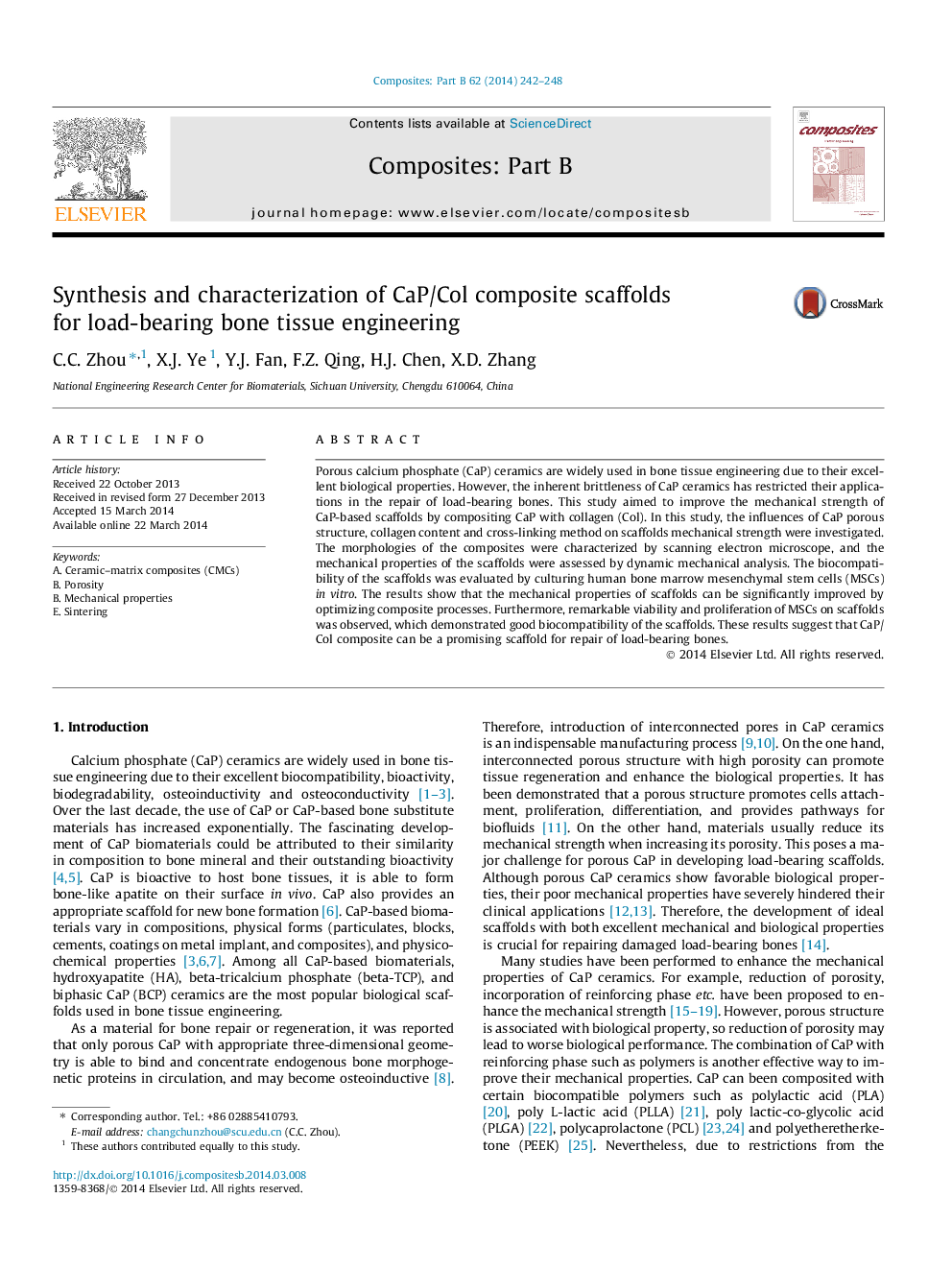| Article ID | Journal | Published Year | Pages | File Type |
|---|---|---|---|---|
| 817685 | Composites Part B: Engineering | 2014 | 7 Pages |
Abstract
Porous calcium phosphate (CaP) ceramics are widely used in bone tissue engineering due to their excellent biological properties. However, the inherent brittleness of CaP ceramics has restricted their applications in the repair of load-bearing bones. This study aimed to improve the mechanical strength of CaP-based scaffolds by compositing CaP with collagen (Col). In this study, the influences of CaP porous structure, collagen content and cross-linking method on scaffolds mechanical strength were investigated. The morphologies of the composites were characterized by scanning electron microscope, and the mechanical properties of the scaffolds were assessed by dynamic mechanical analysis. The biocompatibility of the scaffolds was evaluated by culturing human bone marrow mesenchymal stem cells (MSCs) in vitro. The results show that the mechanical properties of scaffolds can be significantly improved by optimizing composite processes. Furthermore, remarkable viability and proliferation of MSCs on scaffolds was observed, which demonstrated good biocompatibility of the scaffolds. These results suggest that CaP/Col composite can be a promising scaffold for repair of load-bearing bones.
Related Topics
Physical Sciences and Engineering
Engineering
Engineering (General)
Authors
C.C. Zhou, X.J. Ye, Y.J. Fan, F.Z. Qing, H.J. Chen, X.D. Zhang,
